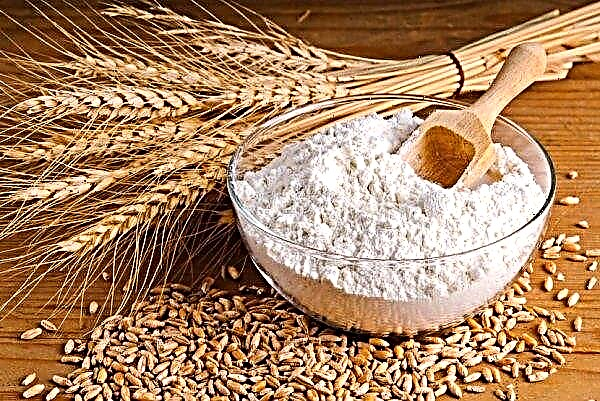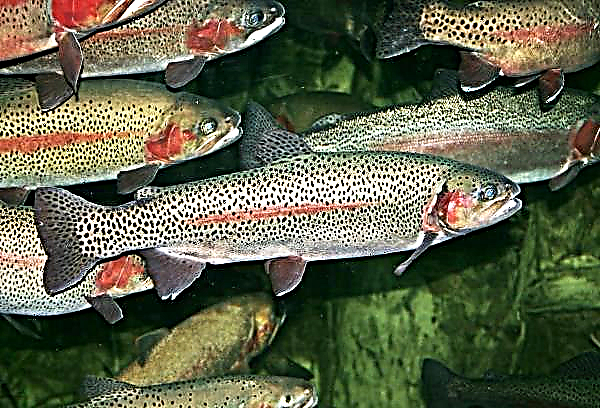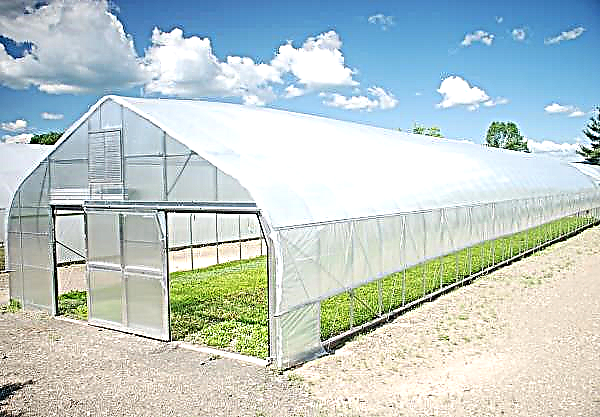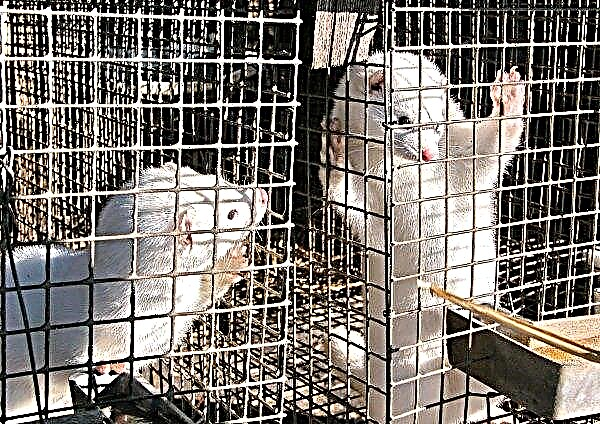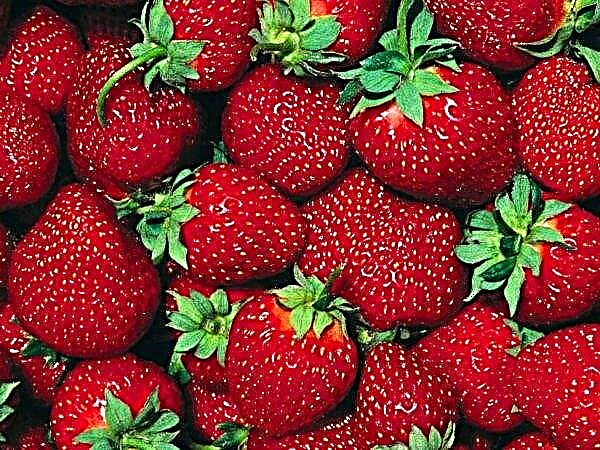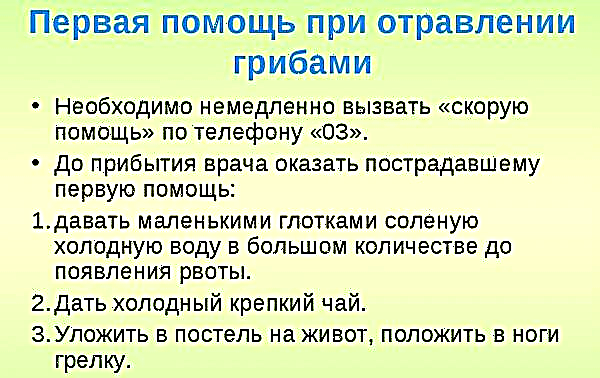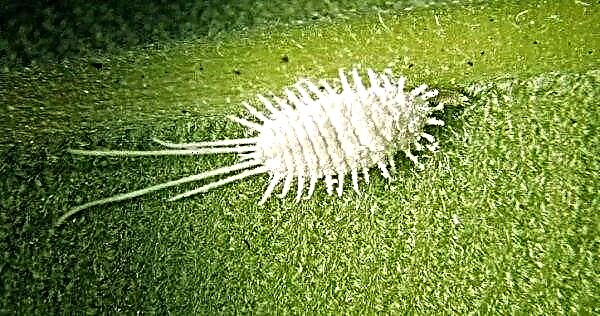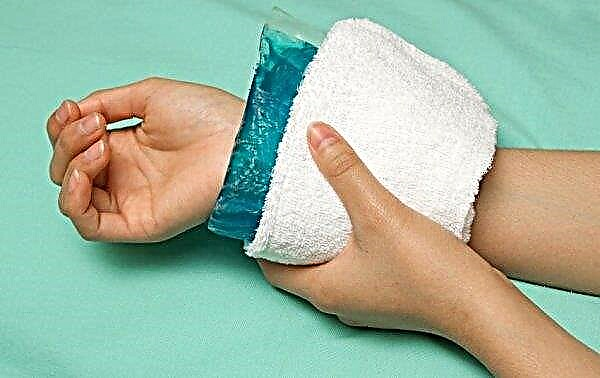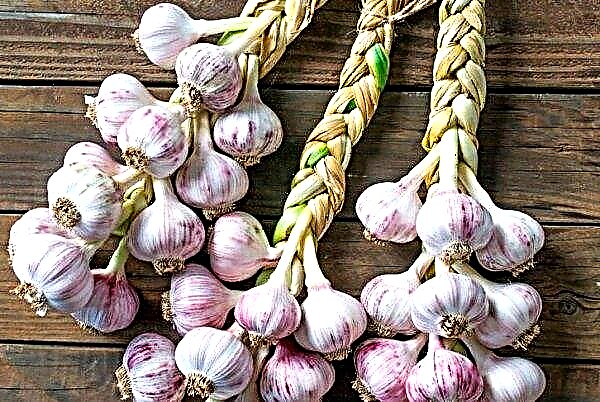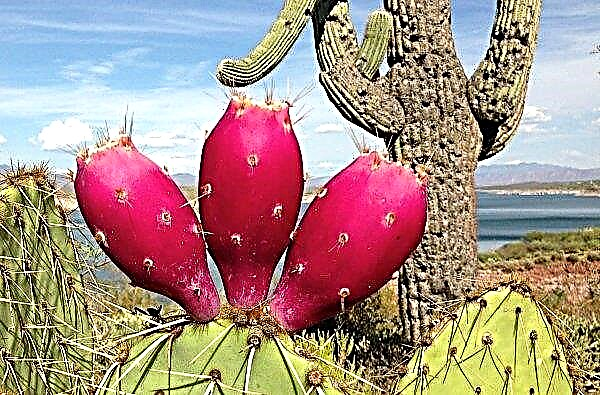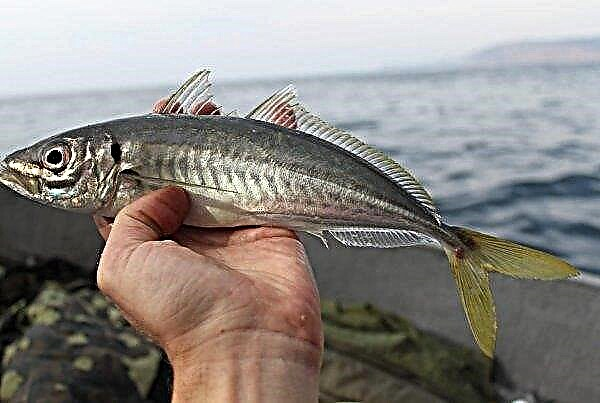Edible honeysuckle can be increasingly seen in Russian gardens. This culture is remarkable in that its large blue fruits ripen one of the first in the summer season. The following is a description of the variety Nizhny Novgorod (Novgorod) early, recommendations are given on the cultivation, reproduction and care of its bushes.
Description of a variety of a honeysuckle Nizhny Novgorod Early
The variety belongs to shrubs belonging to the family Honeysuckle (Caprifoliaceae), has edible tasty fruits of bright color, is not afraid of low subzero temperatures. Nizhny Novgorod early belongs to the Moscow dessert varieties of honeysuckle; it is cultivated both on personal plots by amateur gardeners and in industrial cultivation.
 It differs in the early flowering and ripening of berries, and is valued for large fruits.
It differs in the early flowering and ripening of berries, and is valued for large fruits.
Selection history
In the middle of the last century, a long-term selection selection of edible honeysuckle with fruits that did not have bitterness began in the Moscow Botanical Garden. The homeland of the prototypes were the regions of Siberia and the Urals, the Far East and the Tien Shan mountains. The creator of Nizhny Novgorod early is amateur breeder Kuminov L.P., who used wild-growing specimens from the Magadan Region and Kamchatka as the basis for 30-year-old selection.
Did you know? Depending on the variety, honeysuckle may have fruits of blue, red, yellow or orange. It must be remembered that only blue-violet berries are edible, all the rest are poisonous to humans to varying degrees.
Appearance, characteristics of berries
Nizhny Novgorod early is a medium-sized plant, with a maximum bush height of up to 1.7 m. A compact, but magnificent crown is formed in the form of a ball; leafy variety is moderate. Thin fruit branches are not prone to lodging, grow vertically. Leaf blades of medium size, elongated, lanceolate, painted green, are located on both sides of the shoots.
Berry ripening occurs approximately 40 days after Nizhny Novgorod has flowered, in early or mid-June. The variety most rapidly enters maturity in the central regions of Russia, in the Moscow region and on the banks of the Volga. In the Urals or in Transbaikalia, berries are sung a few weeks later. An adult, healthy plant that has reached the age of full fruiting (5-6 years), gives a harvest of 3 to 5.5 kg per season.
 In early May, the bush is covered with pale, nondescript flowers that emit a pleasant smell and attract pollinating insects.
In early May, the bush is covered with pale, nondescript flowers that emit a pleasant smell and attract pollinating insects.
Edible berries have a dark blue, almost purple color and a whitish, waxy coating on top of the skin. The fruits have an elongated, slightly pear-shaped form, their length reaches almost 1.5 cm, and their mass is from 0.8 to 1.2 g. The berries are firm, smooth, juicy flesh with a sweet and sour dessert. The fruits are easily removed from the branches, when the peeling does not occur, the skin is not damaged, which is very important for the long-term preservation of berries.
Advantages and disadvantages of the variety
- Positive qualities of Nizhny Novgorod early:
- dry separation of berries;
- large fruits;
- good taste, without bitterness;
- high content of vitamins C, P, PP, A, sugars and organic acids;
- early ripening;
- resistance to freezing.
The variety is intended for mass agricultural cultivation, as it has practically no negative characteristics.
- Its small flaws can be condescending, since they are easily eliminated with the help of agronomic techniques:
- fast overripe fruits;
- tendency to shed berries.
Agricultural technology
If the grower decided to grow edible honeysuckle on the garden plot, he should definitely familiarize himself with the rules for planting, forming a bush and caring for it. The plant will delight the gardener with fragrant flowering and exotic blue berries only if suitable conditions for the growing season are created for him.
Video: Honeysuckle Nizhny Novgorod
Seat selection
Honeysuckle prefers light sandy soils, but grows well on other soils. To reduce the acidity of the substrate, you can use lime or chalk powder, depleted earth needs a lot of organic matter.
Important! The gardener needs to consider that a deep shadow contributes to a change in the taste of honeysuckle berries, which lose their sweetness, in return acquiring an unpleasant bitterness.
Before planting, the roots of the seedlings are inspected and cut out all dry or damaged areas. The time for this comes when the average air temperature per day is 0 ° C or rises higher. Unpretentious shrub quickly adapts to any climate, so that the early Nizhny Novgorod will bear fruit almost anywhere in Russia. Already by mid-summer, elegant greenery and bright orange flowers will weave the structure or support and will decorate them until the onset of cold weather.
 Curly honeysuckle is often planted next to summer arbors and pergolas for vertical gardening.
Curly honeysuckle is often planted next to summer arbors and pergolas for vertical gardening.
Landing and care
It is recommended to plant honeysuckle in the spring (from March to April), in the summer (from the end of July) or in the fall. September and October are considered the most suitable time for such work, but if there is a need for transplantation of shrubs in the spring, it is better to do this before the buds open. A good location for the bush will be a well-lit place, protected by a building or fence from winter winds.
How to plant edible honeysuckle:
- Landing pits (40 × 40 × 40 cm) are made according to the number of seedlings, while it is necessary to observe intervals between them from 100 to 200 cm.
- During preparation, it is recommended that a bucket of organics, 0.5 l of wood ash, 100 g of double superphosphate, 25-30 g of potassium sulfate, as well as a small amount of top soil be added to the recess. All components are mixed until uniform, after which plant transplantation can begin.
- The seedling is set in the center of the recess.
- The root system is straightened and, periodically shaking, fall asleep with loose soil. The recommended deepening of the root neck of the shrub is from 3 to 5 cm.
- Planted honeysuckle is well watered, and the trunk circle is covered with a layer of mulch.
 The shrub is subjected to primary pruning, in which all branches are shortened by 20-30 mm, which contributes to the rapid growth of the crown over the next few years.
The shrub is subjected to primary pruning, in which all branches are shortened by 20-30 mm, which contributes to the rapid growth of the crown over the next few years.
Honeysuckle does not need frequent watering, because it is a drought tolerant plant. But during a period of prolonged drought, the bush needs to be additionally irrigated under the root, as adverse conditions can affect the taste of the berries. If in summer there are moderate temperatures and rains periodically, the frequency of watering is reduced to 2-3 procedures for the entire growing season. At one time, it is recommended to use about a bucket of water under the bush.
The day after moistening the soil, it is advisable for the gardener to deeply loosen the root layer. This shrub likes moisturizing the air, so you need to not only water it, but also periodically spray the honeysuckle with water. This requirement is especially relevant during the summer heat, so the gardener refreshes the bush and keeps it from drying out.
 To do this, bark, sawdust or leaves are laid around the plants, periodically replenishing their number, since organics are prone to decomposition.
To do this, bark, sawdust or leaves are laid around the plants, periodically replenishing their number, since organics are prone to decomposition.
The bushes have a shallow root system, so it is advisable to cover it with a layer of organic mulch. Extra shelter will keep the soil evenly moist, helping the berries reach their maximum size and providing better absorption of nutrients by the roots.
Honeysuckle also needs fertilizer, however, all fertilizing should be done after soil analysis. If the cultivation is carried out on a substrate of very poor quality or the symptoms of nutrient deficiency on the leaves and small fruits become noticeable, the gardener needs to add a dose of organic fertilizer under the bush in the spring.
Pollination Features
Plant growers need to keep in mind that Nizhny Novgorod early is a pollinated variety, therefore, to obtain tasty fruits, it is necessary to plant several additional plants nearby (from 3 to 7 pieces). As pollinators, varieties of honeysuckle Lakomka and Kuminovka are suitable for Nizhny Novgorod.

Honeysuckle breeding
This process can be carried out in two ways.
Cuttings- the most popular method, because in this way up to 200 seedlings can be obtained from an adult bush. In March, before the buds open, you need to carefully inspect the bush, select several powerful lignified annual branches with a diameter of 6–9 mm and a length of 16–17 cm, carefully cut them and plant them in a greenhouse or outdoors if the snow has already melted. During operation, you need to control so that there is no deepening of the kidneys into the ground.
 The length of green cuttings varies from 10 to 15 cm.
The length of green cuttings varies from 10 to 15 cm.
In the warm season, the culture is easily propagated by young, not lignified branches that grew this year and cut from honeysuckle at the time of ripening. Planting and care are identical to working with lignified planting material, but additional attention should be paid to soil moisture. In order for rooting to pass quickly, it is advisable to soak the seedlings in the preparation “Heteroauxin” for a while.
Important! Seedlings will take root faster if the nursery is covered with spanbond or agrofibre.
Create root layers - According to gardeners, this method is not the most time-consuming. A suitable time for the procedure begins around June, after flowering ends. To begin with, gently open the near-stem substrate and select several strong young branches closer to the ground. Then the shoots are tilted so that they come into contact with the soil, fixed in this position with a wire pin, 3-4 cm of soil are poured on top. During the entire period of root formation, the soil in this place should remain slightly moist.
 About a year later, with the onset of spring, when roots appear on branches in places of contact with the substrate, the gardener separates young plants from the mother bush with secateurs and replants them.
About a year later, with the onset of spring, when roots appear on branches in places of contact with the substrate, the gardener separates young plants from the mother bush with secateurs and replants them.
Pest and Disease Control
The culture is susceptible to diseases such as powdery mildew, bacterial burns and olive blotch caused by fungi spores. To get rid of them, the gardener should use fungicides, copper sulfate or Bordeaux liquid. As soon as it is noticed that the leaves began to break down, become yellow or brittle, it is time to immediately take measures to eliminate the cause of the ailment.
 Preventive spraying is recommended in the early spring, starting from the moment the kidneys open, and repeat the procedure every 2 weeks.
Preventive spraying is recommended in the early spring, starting from the moment the kidneys open, and repeat the procedure every 2 weeks.
Honeysuckle can also harm insects such as caterpillars of the mothfor which the berries of the plant are both a maternity hospital and a dining room, after which the damaged fruits acquire a purple color even before full maturity, wither and fall off. On shrubs, parasites such as aphids, spider mites, caterpillars of the leafworm and other pests are often found, the result of which is the weakening of plants.
 To combat insects, gardeners apply spraying of the crown with the preparations Decis and Inta-Vir, Confidor, Rogor or Actellik.
To combat insects, gardeners apply spraying of the crown with the preparations Decis and Inta-Vir, Confidor, Rogor or Actellik.
Cropping and shaping the crown
The first three years of vegetation, the bush does not need to be formed. If the gardener carefully cares for the honeysuckle and takes care of the removal of dried branches, pruning will be needed only after the plant reaches 5-6 years. Cut annual growth is best in autumn. With the help of garden shears, shoots growing from the soil are removed, as well as getting rid of intersecting and broken shoots.

The crown needs to be thinned out regularly so that the wind and lighting can freely penetrate the stems and leaves. All young shoots are undesirable to cut, because they will bear fruit for the next season. After hibernation, you need to free the honeysuckle from frozen and broken snow branches and give the shrub the desired shape.
Wintering
The natural habitat of edible honeysuckle is the northeastern region of the globe, therefore, the bush has very high natural resistance to frost. A plant without shelter can withstand low temperatures up to -40 ° C, so a gardener should not worry about freezing plantings in winter.
Harvesting and transportation of the crop, shelf life of berries
Since the variety is prone to the overgrowing of overripe berries, experienced gardeners, in order not to lose part of the crop, lay fabrics or films under the bushes of the cloth, from which the crumbled fruits are collected.Harvesting begins as soon as the peel and pulp of the fruits acquire the same color, and are carried out in several stages, since the crop does not ripen at the same time. Torn fruits are stacked in small containers with a volume not exceeding 0.5 l, which contributes to the preservation of their integrity.

If the fruit is supposed to be stored for some time (7-12 days), they need to provide suitable conditions, with an air temperature of + 8 to + 12 ° C. Honeysuckle can be successfully transported if the transport is equipped with refrigerators, which maintain a given microclimate.
Did you know? In ripe honeysuckle berries, the peel and flesh are the same dark blue. If the color does not match - the berries are immature and are not suitable for food.
Growing honeysuckle early in the private garden of Nizhny Novgorod will allow the gardener to enjoy the first berries very early, in a period when even the first strawberry has not yet ripened. To get a crop sufficient for a small family, it is enough to plant only 3-4 plants, which is important for the owner of a summer cottage.

